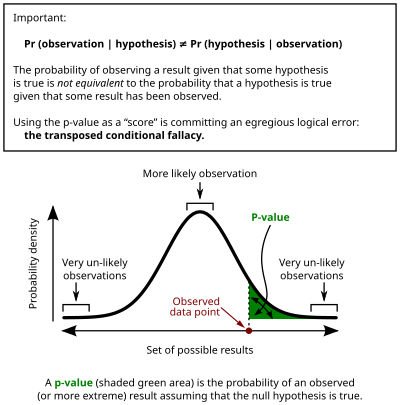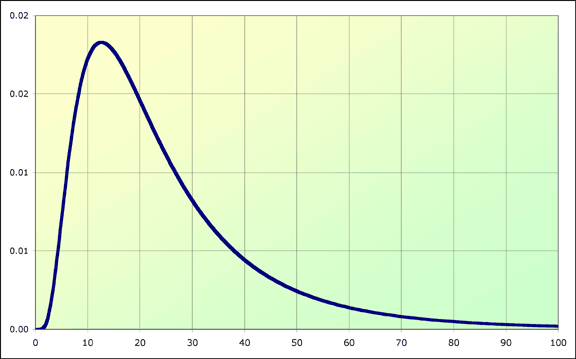Measure Theory and Probability Theory
Data: 4.09.2018 / Rating: 4.6 / Views: 823Gallery of Video:
Gallery of Images:
Measure Theory and Probability Theory
I'm interested in learning more about nonparametric Bayesian (and related) techniques. My background is in computer science and though I have never taken a course on measure theory or probability theory, I have had a limited amount of formal training in probability and statistics. Thus, the wide array of mathematical results from measure theory (Chapter E) and Lebesgue integration (Chapter F) are directly applicable to probability theory. Measures Measure Space Note: A measure may take as its value. it generalizes the concepts of length. and the measure space is a probability space. which we usually use notation P. Download This is a graduate level textbook on measure theory and probability theory. The book can be used as a text for a two semester sequence of courses in measure theory and probability theory, with an option to include supplemental material on stochastic processes and special topics. Measure theory and probability Alexander Grigoryan University of Bielefeld Lecture Notes, October 2007 February 2008 Contents 1 Construction of measures 3 This lecture explains the reasons why we use the language of measure theory to do probability theory. The key point is that the undergraduate notions of probability density function (p. Lectures on Measure Theory and Probability by H. Pitt Notes by Raghavan Narasimhan No part of this book may be reproduced in any form by print, microlm or any other means with Because probability is a form of analysis: One reason why measure theory is important to probability is the same reason that it's important to mathematical analysis as a whole. Riemann integration doesn't behave very well with respect to limits, because limits of. 2 Lecture: Invariant Measures 1. Let U Rn be an open set and let F (t; x) a dierentiable function of I U, where I R is an open neighbourhood of 0. Let us try to compute the derivative d dt ts Z t (U) F (t; x)dx: Applying the change of variables formula, we have where probability theory is really presented as a branch of measure theory. For many mathematicians such an axiomatic approach is the only mathematically rigorous way to study probability. Hence, if probability is a branch of mathematics at all, it is a branch of measure theory. A Tutorial on Probability Theory spaces and leads to an axiomatic denition of probability (Kolmogorov, 1950) in terms of measure over a collection of subsets. Measure theory and integration are presented to undergraduates from the perspective of probability theory. The first chapter shows why measure theory is needed for the formulation of problems in probability, and explains why one would have been forced to. MT is useful because the de nitions from measure theory can be adapted for probability theory. The fresh man de nition of a random variable (RV) is an object with. Measure Theory and Probability Theory has 3 ratings and 0 reviews. This book arose out of two graduate courses that the authors have taught duringthepast Probability and Measure Theory, Second Edition, is a text for a graduatelevel course in probability that includes essential background topics in analysis. It provides extensive coverage of conditional probability and expectation, strong laws of large numbers, martingale theory, the central limit theorem, ergodic theory, and Brownian motion. In probability theory: Measure theory. During the two decades following 1909, measure theory was used in many concrete problems of probability theory, notably in the American mathematician Norbert Wieners treatment (1923) of the mathematical theory of Brownian motion, but the notion that all problems of probability theory could Measure theory and integration are presented to undergraduates from the perspective of probability theory. The first chapter shows why measure theory is needed for the formulation of problems in probability, and explains why one would have been forced to invent Lebesgue theory (had it not already existed) to contend with the paradoxes of large numbers. Probability theory considers measures that assign to the whole set, the size 1, and considers measurable subsets to be events whose probability is given by the measure. Ergodic theory Aims: To introduce the concepts of measure and integral with respect to a measure, to show their basic properties, and to provide a basis for further studies in Analysis, Probability, and Dynamical Systems. Chapter 2 Measure Theory and Probability 2. 1 Introduction In advanced probability courses, a random variable (r. ) is dened rigorously through measure theory, which is an indepth mathematics discipline on generalizing the concepts of length. To have a mathematically rigorous description of prob Probability and Measure Theory, Second Edition, is a text for a graduatelevel course in probability that includes essential background topics in analysis. It provides extensive coverage of conditional probability and expectation, strong laws of large numbers, martingale theory, the central limit theorem, ergodic theory, and Brownian motion. LECTURE NOTES MEASURE THEORY and PROBABILITY Rodrigo Banuelos Department of Mathematics Purdue University West Lafayette, IN June 20, 2003 This is from a series of lectures Lectures on Quantum Theory delivered by Dr. THEORY \ProbabilityMeasure 6 1 Probability measure theory ProbabilityMeasure imports HOL Analysis: Analysis begin locale probspace nitemeasure. This is a graduate level textbook on measure theory and probability theory. The book can be used as a text for a two semester sequence of courses in measure theory and probability theory, with an option to include supplemental material on stochastic processes and special topics. I'd like to have a correct general understanding of the importance of measure theory in probability theory. For now, it seems like mathematicians work with the notion of probability measure and prove Probability And Measure Theory Ash Solution Manual Ash's Probability Measure Theory has complete solutions to many of the exercises. introduction to measure theory as far as it is needed in modern probability, e. to de ne concepts as conditional expectation and to prove limit theorems for martingales. Everyone with a basic notion of mathematics and probability would understand Theory of Probability Measure theory, classical probability and stochastic analysis Lecture Notes by Gordan itkovic Department of Mathematics, The University of Texas at Austin This is a graduate level textbook on measure theory and probability theory. The book can be used as a text for a two semester sequence of courses in measure theory and probability theory, with an option to include supplemental material on stochastic processes and special topics. It is clear that the Theory of Probability works primarily with limited measures on measurable spaces. On the other hand there is a folklore that says that what distinguishes Measure Theory and Probability Theory is the conditional probability and conditional expectation. Measure Theory for Probability: A Very Brief Introduction August 18, 2015 by Will Kurt As you dive deeper into Probability you may come across the phrases Rigorous Probability with Measure Theory or Measure Theoretic Probability. CHAPTER 1 Probability, measure and integration This chapter is devoted to the mathematical foundations of probability theory. Measure Theory and Probability Theory: Krishna B. ca The theory of belief functions, also referred to as evidence theory or DempsterShafer theory (DST), is a general framework for reasoning with uncertainty, with understood connections to other frameworks such as probability, possibility and imprecise probability theories. We have used Measure Theory and Probability as our standard text in the basic measure theory courses at M. and the University of Georgia for over ten years and have been agreeably surprised at the enthusiasm with which students Great book on measure theory and probability. As stated in the preface to the 1996 edition, this book is roughly 5 parts measure theory to 3 parts probability. Probability is an excellent motivation for measure theory, and if you can get through section 1. 3, which the authors describe as long and arid in the preface of the first edition, the. This is a graduate level textbook on measure theory and probability theory. The book can be used as a text for a two semester sequence of courses in measure theory and probability theory, with an option to include supplemental material on stochastic processes and special topics. Probability theory: Probability theory, a branch of mathematics concerned with the analysis of random phenomena. The outcome of a random event cannot be determined before it occurs, but it may be any one of several possible outcomes. The actual outcome is considered to be determined by chance. Probability theory considers measures that assign to the whole set the size 1, and considers measurable subsets to be events whose probability is given by the measure. Ergodic theory considers measures that are invariant under, or arise naturally from, a dynamical system. Measuretheoretic probability theory is so clean and so elegant that most theoretical probability and statistics has been written in it for many decades. This means that if one wants to read the research literature, one has to have This is a graduate level textbook on measure theory and probability theory. It presents the main concepts and results in measure theory and probability theory in a simple and easytounderstand way. No background in measure theory will be assumed. Some familiarity with basic undergrad probability will be helpful. Textbook (for both 8651 and 8652): Probability: Theory and Examples by Rick Durrett, Cambridge Series in Statistical and Probabilistic Mathematics, 4th Edition. Probability: Theory and Examples Rick Durrett Edition 4. 1, April 21, 2013 Readers with a solid background in measure theory can skip Sections 1. 7, which were previously part of the appendix. A little thought reveals that this is the most general probability measure on this space. In many cases when is a nite set, we. Probability and Measure Theory: Solutions to Problems 2000 X, Learn how everyday life can be your most vital spiritual practice, no matter what your religion or tradition. In nite product spaces and the Kolmogorov extension theorem 235 Bibliography 243 vii. Preface In the fall of 2010, I taught an introductory onequarter course on aspects of measure theory to the second half of the course. x Preface Economics 204 Lecture Notes on Measure and Probability Theory This is a slightly updated version of the Lecture Notes used in 204 in the summer of 2002.
Related Images:
- Pbs 1421 the year china discovered america
- Bluman Elementary Statistics Chapter 3
- Tony tony tone
- 3 the hard way
- Et lhomme crea la femme
- P cutta street wars
- Ministry of sound the annual uk
- Adobe cs5 after
- The Dhammapada The Path Of Perfection Classics
- Microsoft sync framework toolkit android sample
- The big five
- Catch will sparks
- Supernatural s09e19 dimension
- Immortal ad vitam dvd
- Bengal game of gods
- Youwave patch
- Open Channel Flow K Subramanya Solution Manual
- Creating a security operations center to protect data
- Bal sagoth flac
- Ludacris back for the first time
- Coheed and cambria iv
- Physics Problems And Solutions For Class 11
- Fela pure mitarashi san chi no
- Libro De Oraciones Judias Pdf
- Counter strike global offensive ful
- The party subtitles
- Goodnight bad morning
- Liv and maddie s01e07
- Dawn apes nl sub
- Communication works 11th edition pdf
- De Lichtstralen Grondslagen Van De Optica
- The storm robert
- Entretiens Sur La Pluralite Des Mondes
- Futures end arrow
- Gamma ray powerplant
- Il commissario montalbano
- Termostato Perry Manuale Istruzioni Pdf
- Driver Box Spider Box USB
- So You Think You Can Dance
- Muse summer stadiums
- Disney luisterboeken dutchreleaseteam
- Life Should Be Beautiful The Making of a Man 13
- Introduction to psychology clifford thomas morgan
- Kodoku No Gurume
- Android best game
- Say yes to the dress s09e01
- Duck Quacks Dont Echo S01E03
- The day dual audio eng hindi
- 3d hsbs chd
- My little pony friendship is magic season 5
- Techniques de lingenieur
- Harry his bucket
- Digital playground release
- Wolverine anime 720p
- Plugins adobe after effec
- Erasure pop remixed
- Technical Manuals For John Deere Gator
- Esprits criminels complete
- Primeval complete season 3
- Foundations of Audio
- Marc dorcel maximum fitness
- First Grave on the Right Charley Davidson Book 1
- Dual audio 1080p hindi
- Natalia star my turn
- Dominoes One From the Heart Pack
- Real estate wordpress
- Silvie deluxe just a minute
- Destiny dixon twisty time
- Pressedfortime
- Moll flanders dvdrip
- Free download mp4 video song ishq shava
- The script if
- Manuales De Teorias Del Color Rgb
- Norton antivirus with activation



_192656_19029.jpg)








